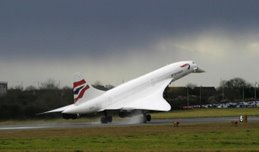The Monastery of Saint Ivan Rilski is one of the seven cultural sites currently included (since 1983) in UNESCO's World Heritage List!

"HIGHWAY - The Rila Monastery is located 117km away from Sofia to the south, on the slopes of the Rila Mountain at 1,147 meters above sea level, in the valley of the Rilska River, and 29 km east of the Sofia-Thessaloniki Highway. The highest peak of the Rila Mountain, Mousala (2925 meters), which is also the Balkan Peninsula’s highest point, is only about 8 hours’ walk away.
We had some help on our drive to reach the monastery..."

"RADOMIR - On the way to the Monastery, we passed through the town of Radomir, which has an interesting story. According to Wikipedia, a rebellion broke out there on 28 September 1918. However, the movement for a new republic was quickly eliminated, lasting only until 2 October 1918, but was successful in eliminating the rule of King Ferdinand, who fled Bulgaria on 3 October 1918, in the wake of Allied occupation"

"RILA ENTRANCE - The Rila Monastery was founded in the 10th century by St. John of Rila, a hermit canonized by the Orthodox Church. The exterior of the monastery has high stone walls (reaching 4 floors) cut by small windows, reminding more of a military fort rather than a monastery"

"HRELYU TOWER - In the middle of the inner courtyard we may find the oldest building of the complex, a stone tower built by the feudal Sebastocrator (a meaningless title, which signified only a close relationship with the emperor) Hrelyu in 1334-1335"

"THE RESIDENTIAL BUILDINGS are a characteristic example of the Bulgarian Renaissance. Following a fire in 1833, the architect Aleksi Rilets ran the reconstruction of the wooden part of the monastery with the help of 3,000 master builders, who managed to finish it within just 10 days, it seems"

"THE YARD - The closed irregular quadrangle contains the 4-floor residential part, which consists of more than 300 monks' cells, 4 chapels, an abbot’s room, a kitchen, a library and guestrooms"

"CELL - Doesn't seem too ascetic..."

"SPOONS - The kitchen is particularly interesting for its huge cooking devices"

"CHIMNEY – The kitchen chimney is quite impressive"

"WASHING MACHINE - Quite ingenious"



"THE FRESCOES - The brightly painted frescoes of the main church, sheltered under the arcades, are gorgeous, and the frescoes at the interior of the Church (no pictures allowed) absolutely stunning"

"DOMES"

"MAIN CHURCH"

"RILA COMPLEX - As many other Bulgarian monasteries that survived the Ottoman times, Rila, the largest Eastern Orthodox monastery in the country, acted as the nation's centre of spiritual life under the foreign rule. Its beauty was an astounding surprise!"





































































